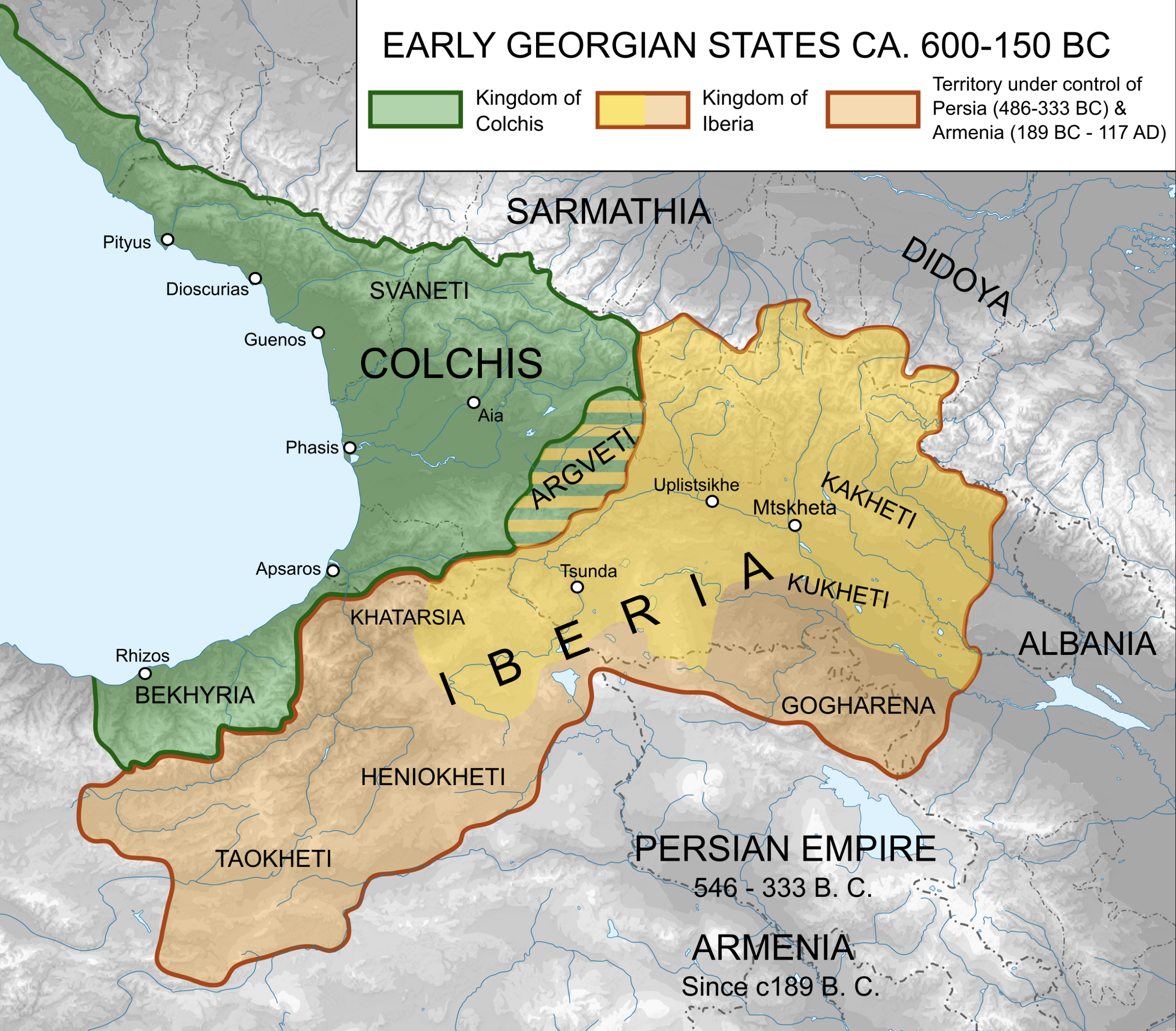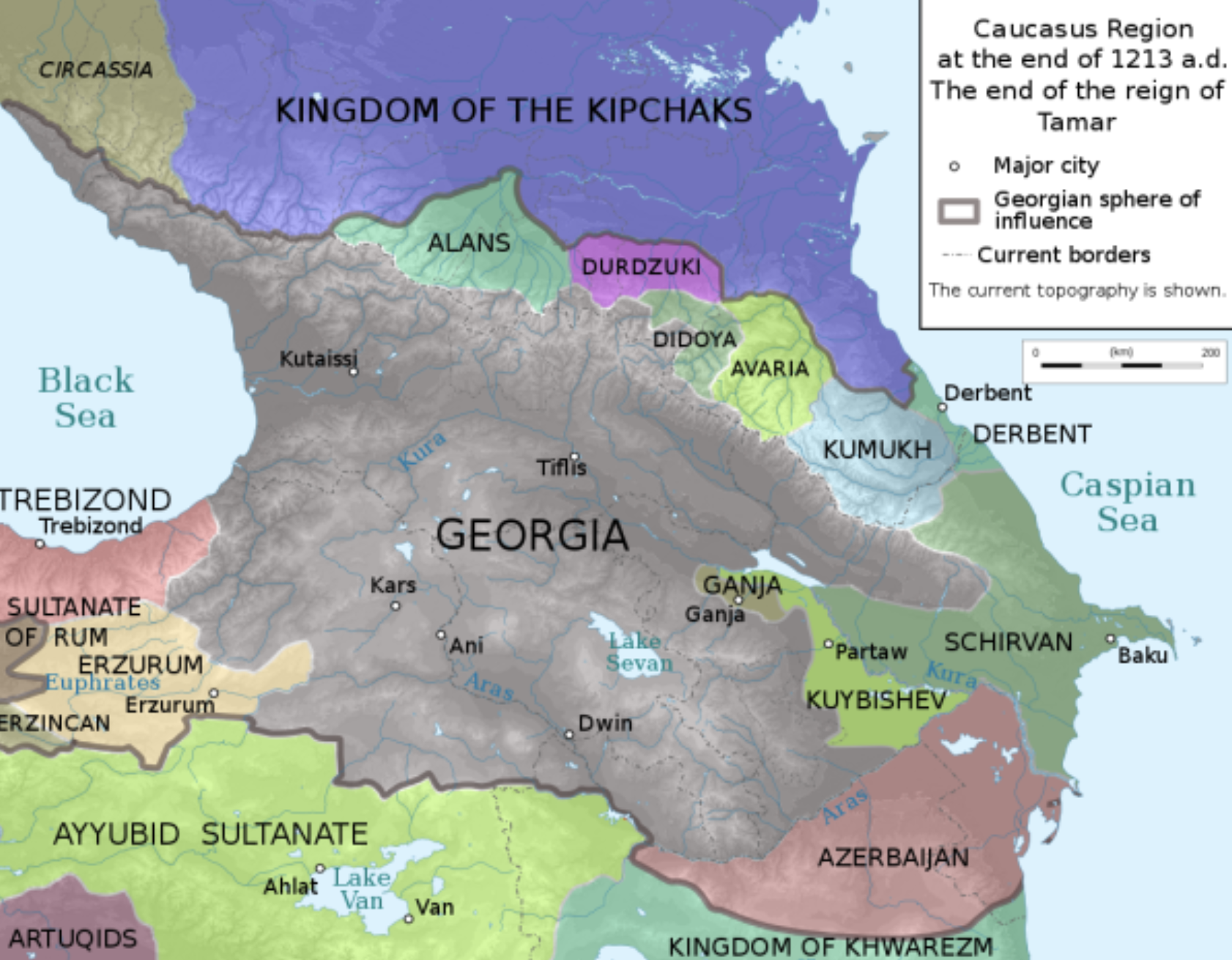Ancient History
Georgia's history dates back to ancient times, with archaeological evidence suggesting human habitation as early as 1.8 million years ago. The region was home to some of the earliest hominid remains outside of Africa.
By the 12th century BCE, two major tribes emerged in the region: the Colchians in western Georgia and the Iberians in the east. The ancient Greeks were familiar with the western Georgian kingdom of Colchis, famous in Greek mythology as the destination of the Argonauts and the home of Medea.
In the 4th century BCE, the Kingdom of Iberia (Kartli) was formed in eastern Georgia. This period saw the introduction of Christianity to Georgia by St. Nino in 330 CE, making it one of the world's earliest Christian nations.

Medieval Georgia
The medieval period saw the rise of a unified Georgian state. The Kingdom of Georgia reached its zenith during the reign of King David IV (the Builder) and his granddaughter Queen Tamar in the 12th and early 13th centuries.
This era, known as Georgia's Golden Age, was characterized by military successes, cultural achievements, and economic prosperity. Georgian architecture, literature, and art flourished during this time.
However, the Mongol invasions in the 13th century marked the beginning of Georgia's decline. The kingdom fragmented into several smaller states, leaving it vulnerable to conquests by various empires, including the Ottomans and Safavids.

Georgia under the Russian Empire
In the late 18th and early 19th centuries, Georgia sought protection from its Muslim neighbors by allying with Christian Russia. In 1801, the Russian Empire annexed the Kingdom of Kartli-Kakheti, followed by other Georgian territories.
Russian rule brought relative stability and protection from external threats, but it also led to the suppression of Georgian culture and language. Despite this, the 19th century saw a Georgian national revival, with figures like Ilia Chavchavadze promoting Georgian literature and national consciousness.
The period also saw significant economic development, with Tbilisi becoming an important administrative and cultural center in the Caucasus region.
Georgian Soviet Socialist Republic
Following the Russian Revolution of 1917, Georgia briefly regained independence. However, in 1921, the Red Army invaded Georgia, and it was incorporated into the Soviet Union as the Georgian Soviet Socialist Republic.
The Soviet era brought significant changes to Georgia. Industrialization and collectivization transformed the economy, while literacy rates improved dramatically. However, political repression, especially during Stalin's Great Purge, had a devastating impact on Georgian society and intelligentsia.
Despite the repression, Georgian culture managed to thrive in certain areas, particularly in film, theatre, and sports. The period also saw the rise of nationalist sentiments, which would play a crucial role in Georgia's push for independence in the late 1980s.
Independent Georgia
Declaration of Independence
Georgia declared independence from the Soviet Union on April 9, 1991, following a referendum where 99.5% of voters supported independence. This date was chosen to coincide with the second anniversary of the April 9 tragedy, where Soviet troops violently dispersed pro-independence protesters in Tbilisi in 1989.
Early Challenges
The early years of independence were turbulent:
- Civil war erupted in 1991-1992, primarily due to tensions between supporters of the first democratically elected president, Zviad Gamsakhurdia, and opposition forces.
- Ethnic conflicts in Abkhazia (1992-1993) and South Ossetia (1991-1992) led to de facto separation of these regions from Georgian control.
- Economic crisis: GDP declined by 78% between 1990 and 1994, and hyperinflation reached 15,607% in 1994.
Shevardnadze Era (1992-2003)
Eduard Shevardnadze, former Soviet foreign minister, became the head of state in 1992 and was elected president in 1995. His tenure saw:
- Relative stabilization of the country and end of civil conflicts
- Introduction of the national currency, the Lari, in 1995
- Growing corruption and economic stagnation in the later years
Rose Revolution and Saakashvili Era (2003-2012)
The Rose Revolution in November 2003 brought Mikheil Saakashvili to power. This period was characterized by:
- Radical pro-Western reforms and anti-corruption measures
- Significant economic growth: GDP growth averaged 6.7% annually between 2003-2012
- Improved tax collection and public services
- Tensions with Russia, culminating in the 2008 Russo-Georgian War over South Ossetia
Post-Saakashvili Era (2012-present)
Since 2012, Georgia has seen:
- Peaceful transfer of power to the Georgian Dream coalition in 2012
- Continued pursuit of Euro-Atlantic integration, including signing an Association Agreement with the EU in 2014
- Ongoing efforts to improve democratic institutions and the rule of law
- Economic challenges, including high unemployment and income inequality
Throughout its independence, Georgia has consistently sought closer ties with the West, including aspirations for NATO and EU membership. The country continues to work on improving its economy, strengthening democratic institutions, and addressing the ongoing challenges related to its breakaway regions.

Modern Challenges and Developments
Territorial Disputes
One of the most pressing challenges facing modern Georgia is the ongoing territorial disputes over Abkhazia and South Ossetia. Following the 2008 Russo-Georgian War, these regions declared independence with Russian support, though they remain internationally recognized as part of Georgia. This situation has led to:
- Displacement of approximately 300,000 Georgians from these regions
- Economic challenges due to lost territory and resources
- Ongoing security concerns and periodic tensions along the administrative boundary lines
Economic Development
Georgia has made significant strides in economic reform and development since independence. Key developments include:
- Implementation of liberal economic policies, earning Georgia recognition as one of the world's top reformers in the World Bank's Ease of Doing Business rankings
- Growth in sectors such as tourism, hydroelectric power, and agriculture
- Challenges in addressing unemployment and rural poverty
Balancing International Relations
Georgia's geopolitical position requires careful balancing of its relationships:
- Pursuing closer ties with the EU and NATO, including signing an Association Agreement with the EU in 2014
- Managing complex relations with Russia, balancing historical ties and current geopolitical realities
- Developing strategic partnerships with countries like the United States and regional neighbors
Democratic Development
Georgia has made progress in building democratic institutions, though challenges remain:
- Regular elections and peaceful transfers of power since the Rose Revolution of 2003
- Ongoing efforts to strengthen the rule of law and judicial independence
- Challenges in media freedom and political polarization
Cultural Preservation and Tourism
Georgia has successfully leveraged its rich cultural heritage for economic development:
- Rapid growth in tourism, with visitor numbers increasing from 2.8 million in 2011 to 9.4 million in 2019
- Recognition of Georgian wine culture: UNESCO added the traditional Georgian winemaking method using kvevri clay jars to its list of Intangible Cultural Heritage
- Preservation and promotion of unique Georgian polyphonic singing, also recognized by UNESCO
As Georgia continues to navigate its path in the 21st century, it strives to address these complex challenges while preserving its unique cultural identity and pursuing further integration with European and international institutions. The country's resilience and adaptability in the face of historical and contemporary challenges position it as a dynamic player in the South Caucasus region.


